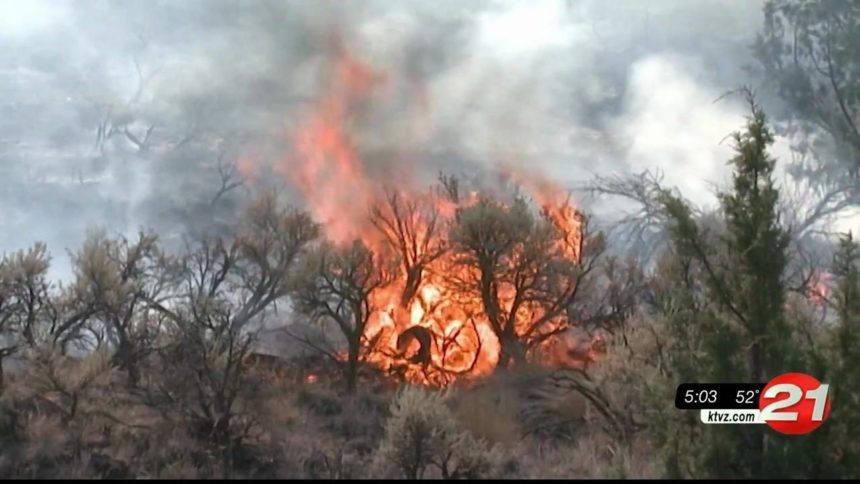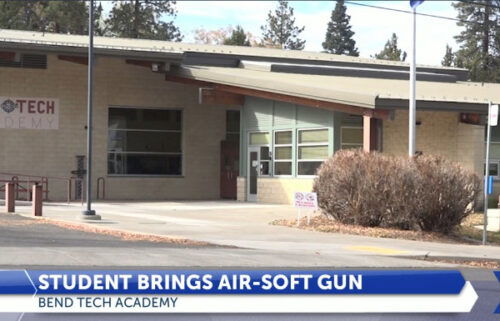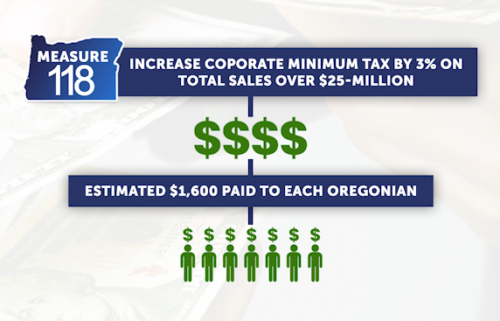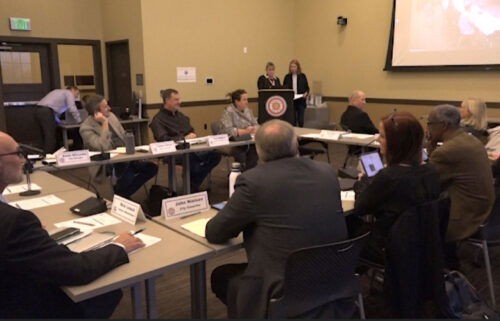BLM releases plan to reduce massive wildfires in the West

BOISE, Idaho (AP) — Federal officials have released a plan for removing or changing vegetation over a huge swath of the West to stop devastating wildfires on land used for cattle ranching, recreation and habitat for imperiled sage grouse.
The plan released Friday by the U.S. Bureau of Land Management aims to limit wildfires in a 350,000-square-mile area of mainly sagebrush habitat that includes parts of Idaho, Oregon, Washington, California, Nevada and Utah.
The plan does not authorize any specific projects. Instead, its analysis can be used to OK treatments for projects involving prescribed fires, fuel breaks and other measures to prevent or limit massive blazes that have worsened in recent decades.
The plan, which cost about $2 million, originated during the Obama administration as officials sought to avoid listing sage grouse as protected under the Endangered Species Act, which could have severely limited mining, ranching and recreation.
Giant rangeland wildfires in recent decades have destroyed vast areas of sagebrush steppe ecosystems that support some 350 species of wildlife. Experts say the blazes have mainly been driven by cheatgrass, an invasive species that relies on fire to spread to new areas while killing native plants, including sagebrush on which sage grouse depend.
Sage grouse were never listed but remain imperiled. The Trump administration, while lifting restrictions on mining and other extractive industries, moved ahead with efforts to control the giant blazes that typically also destroy rangeland needed by cattle ranchers.
Read more at: https://apnews.com/article/wildlife-land-management-wildfires-fires-idaho-969e30838d9b04046ae4cb436c0fecbb
BLM news release:
The Bureau of Land Management releases final plan to conserve and restore sagebrush communities in the Great Basin
Bureau of Land Management Ore. & Wash. - 11/27/20 10:19 AM
BOISE, Idaho – Today, the Bureau of Land Management released the final programmatic environmental impact statement for fuels reduction and rangeland restoration in the Great Basin. This programmatic environmental impact statement is intended to further efforts to conserve and restore sagebrush communities within a 223 million-acre area that includes portions of Idaho, Oregon, Washington, California, Nevada and Utah.
“The Department has led the way in advancing critical treatments, including creating fuel breaks, which stop or slow fires,” said Casey Hammond, Principal Deputy Assistant Secretary of Lands and Minerals. “This effort focused on reducing fuels and restoring natural vegetation will reduce the intensity of wildfires, which in turn will reduce the threats from large and severe wildfires to sagebrush-steppe ecosystem and rangeland resources. As we get projects done, these two approaches will work together.”
The Trump Administration has prioritized active management of the nation’s public lands as provided in Executive Order 13855 and Secretary's Order 3372, which establish a meaningful and coordinated framework for ensuring the protection of people, communities, and natural resources. Implementation of both orders is a priority for reducing the risks of deadly and destructive wildfires.
Sagebrush communities in the Great Basin are a vital part of Western working landscapes and are home to over 350 species of plants and wildlife. Intact sagebrush communities are disappearing within the Great Basin due to increased large and severe wildfires, the spread of invasive annual grasses, and the encroachment of pinyon-juniper. The Great Basin region is losing sagebrush communities faster than they can reestablish naturally. Approximately 45 percent of the historical range of sagebrush has been lost. Fuels reduction and rangeland restoration treatments can reduce fire severity, increase sagebrush communities’ resistance to invasive annual grasses and improve their ability to recover after wildfires.
This effort complements a decision to construct up to 11,000 miles of fuel breaks in the Great Basin that was issued last spring. That decision is already being used to expedite construction of approximately 190 miles of fuel breaks in Idaho, Oregon, California, and Nevada.
“Restoring sagebrush communities improves the sustainability of working rangelands and can reduce the expansion of invasive annual grasses,” said Deputy Director for Policy and Programs William Perry Pendley. “People in the Great Basin depend on these landscapes for their livelihoods and recreation and wildlife rely on them for habitat.”
Under the leadership of President Trump and Secretary Bernhardt, the BLM significantly reduced hazardous fuel loads in fire-prone areas by treating more than 782,000 acres in fiscal year 2020 using a variety of active management vegetation treatments including mechanical, biological, and chemical tools as well as prescribed fire.
The preferred alternative outlined in the final fuels reduction and rangeland restoration programmatic environmental impact statement analyzes a full suite of manual, chemical and mechanical treatments, including prescribed fire, seeding, and targeted grazing to reduce fuels and conserve and restore sagebrush communities. When completed, the programmatic environmental impact statement will not authorize any specific fuels reduction or rangeland restoration projects. Instead, it will analyze common elements of fuels reduction and rangeland restoration projects. Local offices can use this information to comply with National Environmental Policy Act requirements when planning and analyzing specific projects, potentially allowing for more rapid implementation.
An electronic copy of the Final PEIS and associated documents is available for public review for 30 days on the BLM Land Use Planning and NEPA register: https://go.usa.gov/x79bp . The BLM will issue a record of decision after the end of the public review period.
-BLM-
The BLM manages more than 245 million acres of public land located primarily in the 11 Western states and Alaska. The BLM also administers 700 million acres of sub-surface mineral estate throughout the nation. In fiscal year 2018, the diverse activities authorized on BLM-managed lands generated $105 billion in economic output across the country. This economic activity supported 471,000 jobs and contributed substantial revenue to the U.S. Treasury and state governments, mostly through royalties on minerals.



